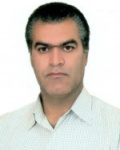| Authors | Mohammad Afrough Asghar Javani Amir Hossein Chit Sazian Fath Ali Qashqaei Far |
|---|---|
| Journal | baghnazar |
| Paper Type | Full Paper |
| Published At | ۲۰۱۷ |
| Journal Grade | ISI |
| Journal Type | Typographic |
| Journal Country | Iran, Islamic Republic Of |
Abstract
What, why and how the patterns are created in the hands of practical tribal and nomadic weavers has always been one of the most important questions in the field of nomadic weaving art. The designs and patterns in the text and content of nomadic handicrafts are abstract, broken, and simplistic. The weaving process is also mental weaving, memorization weaving and improvisation weaving which is one of the most important aesthetic and visual (visual) indicators of this type of Iranian hand weaving. The method or technique of weaving is also varied as a technological component in nomadic weaving, especially Qashqai. In such a way that the weaver uses a variety of weaving techniques and structures or combines them with the power of taste and feeling and plays with warp, weft, fleece and screw, to create different types of hand-woven with different applications. In the present research, the author first studies, studies and classifies the types of hand-woven items of Qashqai tribes and nomads from two perspectives of application and weaving techniques, and then mentions the opinions of four researchers (Parviz Tanavoli, Armen Hongldin, Cecil Edwards and Mohammad Reza Amini). On what and why abstract, abstract and broken patterns in the hands of nomadic weavers and also observing these opinions in the field and in the form of two basic questions of nomadic weavers and matching the weavers' answers with the opinions of the mentioned researchers, following the causes of abstraction, abstraction And simplicity has been the design and role of nomadic handicrafts [Qashqai]. Research Methodology: This research is fundamental in terms of purpose and descriptive-analytical in terms of nature and method. The method of collecting information was both library and field. Research Questions: Are abstraction, abstraction and fracture in Qashqai hand-woven patterns done consciously and voluntarily or unknowingly and due to algebra? How close are the opinions of scholars and commentators in the field of analysis and interpretation of nomadic hand-woven patterns? What are the factors affecting abstraction, abstraction and simplification? Is the nomadic weaver's goal in creating a motif consistent with the theorist in this field in relation to role-playing?
